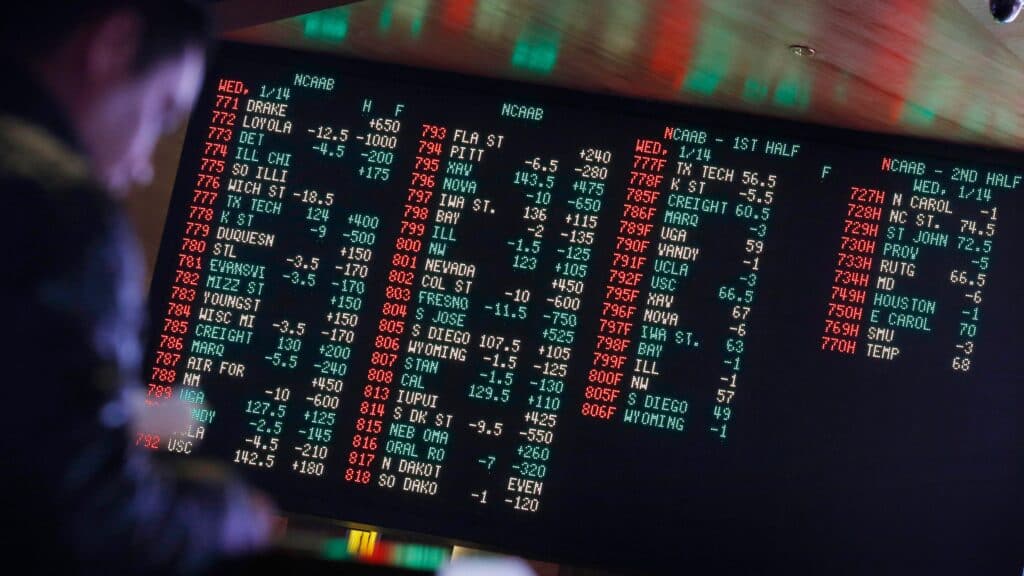Sports betting is an exciting way for fans to engage with their favorite sports while having the chance to win money. Whether you're new to the world of sports betting or looking to refine your understanding of how odds work, grasping the concept of sports betting odds is crucial for making informed and strategic bets. In this comprehensive guide, we’ll dive deep into the world of sports betting odds, explaining how they work, the different formats you’ll encounter, and how to interpret them to maximize your betting success.
What Are Sports Betting Odds?
At their core, sports betting odds are a reflection of the likelihood of a particular outcome occurring in a sporting event. The odds are also used to determine how much money you can win if you place a successful bet. Odds are typically displayed in three main formats: fractional, decimal, and moneyline. Understanding each format will help you navigate the betting landscape and make better decisions.
How Odds Represent Probability
Sports betting odds represent the probability of an event happening, which is then converted into a monetary amount based on your wager. The higher the odds, the less likely the event is to occur. Conversely, lower odds indicate a higher likelihood of the event happening. By converting odds into implied probabilities, you can determine whether a bet offers value. The formula for calculating implied probability is:
Implied Probability = 1 / Odds
For example, if the odds of a team winning are 2/1 (fractional), the implied probability is:
1 / (2/1) = 1 / 2 = 0.50 or 50% chance of winning
Different Types of Sports Betting Odds
There are three primary formats for displaying odds in sports betting: fractional odds, decimal odds, and moneyline odds. Let's break down each format and how they work.
1. Fractional Odds
Fractional odds are the most common format used in the United Kingdom and Ireland. The odds are represented as a fraction, such as 5/1 or 10/3. In this case, the numerator (the first number) represents how much you could win from a bet of the denominator (the second number). For example:
- Odds of 5/1 means for every $1 you wager, you stand to win $5 if the bet is successful.
- Odds of 10/3 means for every $3 you wager, you will win $10 if the bet is successful.
To calculate the total amount you would receive (including your stake) for a successful bet, simply multiply your stake by the fractional odds, then add your original bet amount. For example, if you bet $10 at 5/1, your potential payout would be:
10 * 5 = $50 + the initial $10 bet = $60 total payout
2. Decimal Odds
Decimal odds are popular in many countries, including Canada, Australia, and parts of Europe. These odds are displayed as a decimal number, such as 2.00, 1.50, or 3.75. Decimal odds represent the total amount that will be returned to you for every $1 wagered, including your stake. Here’s how they work:
- Decimal odds of 2.00 means for every $1 you wager, you will receive $2 back if your bet wins, which includes your original stake.
- Decimal odds of 1.50 means for every $1 you wager, you will receive $1.50 back if your bet wins.
To calculate your potential profit, subtract 1 from the decimal odds, then multiply by your wager. For example, if you bet $10 at 2.00 odds, your potential profit would be:
2.00 - 1 = 1.00 (profit per $1 wagered)
1 * 10 = $10 profit + your original $10 bet = $20 total payout
3. Moneyline Odds
Moneyline odds are widely used in the United States and are expressed as either a positive (+) or negative (-) number. Positive moneyline odds indicate the amount you can win from a $100 bet, while negative moneyline odds indicate how much you need to wager to win $100. Here’s how moneyline odds work:
- Positive Moneyline Odds: A positive moneyline, such as +200, means you will win $200 for every $100 wagered. For example, if you bet $50 on a team with +200 odds, your potential payout would be:
50 * 2 = $100 profit + your original $50 bet = $150 total payout
- Negative Moneyline Odds: A negative moneyline, such as -150, means you need to wager $150 to win $100. For example, if you bet $100 on a team with -150 odds, your potential payout would be:
100 / 1.5 = $66.67 profit + your original $100 bet = $166.67 total payout
Factors That Influence Sports Betting Odds
Sports betting odds are constantly changing and are influenced by several factors. Understanding these factors will help you make better bets and identify value in the odds offered. Here are some of the most important factors that affect sports betting odds:
1. Team Form and Performance
Teams that are on a winning streak or have players in excellent form will likely have lower odds (indicating a higher probability of winning). Conversely, teams with a poor recent record may have higher odds, reflecting a lower chance of success.
2. Injuries and Suspensions
Player injuries, suspensions, or any other changes to a team's roster can significantly impact betting odds. If a key player is unavailable, the odds for that team to win will often increase (i.e., the team is less likely to win). Bookmakers adjust the odds based on these developments to reflect the new probabilities.
3. Betting Volume
The volume of bets placed on a specific team or outcome can also affect the odds. If a large number of bettors place wagers on one side of the market, bookmakers may adjust the odds to balance the action and limit their risk.
4. External Events
Weather conditions, venue changes, or other external factors can impact a sporting event's outcome. For example, a rainstorm in a football game can influence the odds, as teams may perform differently under adverse conditions.
Calculating Expected Value (EV) in Sports Betting
One of the most critical concepts in sports betting is Expected Value (EV), which helps bettors determine the long-term profitability of a particular bet. EV represents the average amount a bettor can expect to win or lose per bet, based on the odds and the probability of an outcome. Here's how you can calculate EV:
EV = (Probability of Winning * Amount Won per Bet) – (Probability of Losing * Amount Lost per Bet)
For example, if you bet $100 at 2/1 odds (probability of 33.33%) and your potential win is $200, your EV calculation would be:
EV = (0.3333 * 200) – (0.6667 * 100)
EV = 66.66 – 66.67 = -$0.01
This indicates that, on average, you will lose 1 cent for every $100 bet over the long term. By calculating the EV of each bet, you can better understand which wagers are worth making and which ones should be avoided.
Fun Facts About Sports Betting Odds
- First Use of Odds: The concept of odds dates back to the 16th century, originating in horse racing in England.
- Changing Odds: Odds change as betting action comes in. Bookmakers adjust the odds to ensure they are balanced and manage risk effectively.
- Odds as a Reflection of Public Perception: Sometimes, odds don't just reflect the true probability of an outcome, but also public perception. For example, a highly popular team may have lower odds due to high betting volumes, even if their chances of winning are not significantly better than the underdog.
Conclusion
Understanding how sports betting odds work is essential for becoming a successful bettor. Odds represent the probability of an event occurring, and by interpreting and calculating them effectively, you can make more informed decisions. Whether you’re betting on your favorite team or trying to find value in a market, knowing how to read and use odds in different formats is crucial. By applying the strategies and tips discussed in this guide, you’ll be better prepared to navigate the world of sports betting and increase your chances of making profitable wagers.
Remember, sports betting is not just about luck—it’s about strategy, knowledge, and understanding the odds. Happy betting!



